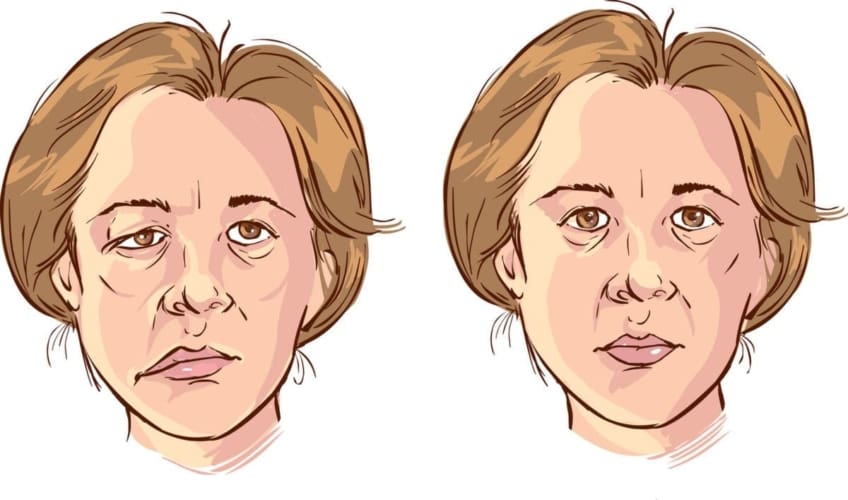
What is Bell’s palsy?
Bell’s palsy is a condition that temporarily paralyzes the side of your face. It can affect all or part of the muscles in your face. In rare cases, both sides of your face may be affected. Bell’s palsy occurs when your facial nerve (or 7th cranial nerve) is damaged. The facial nerve carries signals for movement, taste, and other information to and from your face. When this nerve is damaged, the signals between your face and brain do not work as well. While it may seem scary at the time, this condition usually doesn’t last long.
Symptoms
The symptoms of Bell’s palsy are very similar to the symptoms of a stroke. That is why it is important to get evaluated immediately to rule that out.
If you have Bell’s palsy, you may have some of the following symptoms:
- Drooping that makes your face look uneven
- Loss of facial expression
- Twitching
- Trouble eating or drinking
- Trouble speaking
- Total or partial loss of taste
- Ear pain
- Ringing in your ear(s)
- Headache
- Sensitivity to sound
- Trouble closing your eye
- Dry eye
These symptoms usually affect one side of your face. They appear quickly and reach their worst in a couple of days.
Causes
All causes of Bell’s palsy are not known. It may occur when a virus, such as the common cold, makes your facial nerve swell. The swollen nerve presses against the bone around it. This pressure can stop the nerve from working correctly.
You may be more likely to get this condition if you are between 15 and 60 years of age or have one of the following:
- Herpes simplex
- Diabetes
- A common cold
- The flu
- High blood pressure
- Lyme disease
- Mononucleosis
- HIV or another autoimmune disorder
- Sarcoidosis
- Head trauma
Bell’s palsy affects about 1 in every 5,000 people. Once you have had this condition, you have a slightly higher chance of getting it again.
Diagnosis
There is no specific test to diagnose Bell’s palsy. Your doctor will ask questions about your symptoms and medical history. A stroke, injury, or tumor also can cause facial paralysis. Your doctor will check to see what condition is causing your symptoms. They may do tests, such as an X-ray or magnetic resonance imaging (MRI).
Prevention
You can’t prevent or avoid Bell’s palsy. Contact your doctor when symptoms first begin to start treatment.
Treatment
Bell’s palsy often goes away on its own within 1 to 2 months. Your chances of full recovery are improved with a course of steroid medicine. Your doctor can prescribe this. Your doctor may also prescribe you an anti-viral medicine, too.
At home, you can take simple steps to help your recovery. Eat well and get plenty of rest so you can heal. Protect your eyes with sunglasses when you’re outdoors. Be careful to keep your eyes moist, especially when you’re working at a computer. Wearing an eye patch can help keep your eyes closed at night. Apply low heat, such as a gel pack or heating pad, to help relieve pain and swelling. Gently massage the area. Talk to your doctor if you have severe pain.
Living with Bell’s palsy
Your recovery time will depend on how badly your facial nerve is damaged. If it takes a long time to improve, you may have a few lasting effects. For example, you may have facial movements you can’t control, or your eyes may water or tear.
Questions to ask your doctor
- Will my facial paralysis go away?
- How long will I have symptoms?
- What medicines treat Bell’s palsy? What are their side effects?
- Are there exercises I can do, or lifestyle changes I can make to improve symptoms?
- Does Bell’s palsy indicate other health conditions?
- If I have had Bell’s palsy, is there anything I can do to prevent it from happening again?
Resources
National Institute of Neurological Disorders and Stroke: Bell’s Palsy
![]()
Copyright © American Academy of Family Physicians
This information provides a general overview and may not apply to everyone. Talk to your family doctor to find out if this information applies to you and to get more information on this subject.









